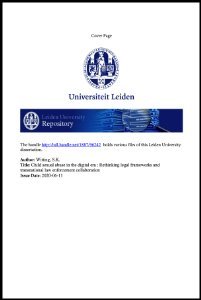By Markus González Beilfuss
According to the European Union (EU) Victims-Directive, victims of crime have the right to be informed, supported and protected, as well as to participate in criminal proceedings. EU Member States retain notable scope for action to transpose these rights into their national legislation, but with the entry into force of this Directive in October 2012, victims' protection entitlements improved significantly within thre remit of EU Law. However, foreign victims with irregular migration status are still in a vulnerable position. Indeed, they are included in the Directive in a particular way. On the one hand, Member States have to take the necessary measures to ensure that the rights set out in the Directive are not conditional on the victim's residence status. According to Art. 1.1, the rights delineated shall apply to all victims in a non-discriminatory manner, including with respect to their residence status. Nevertheless, on the other hand the Directive does not address the conditions of the residence of crime victims in the territory of the Member States. As mentioned in the preamble of the Directive (Recital 10), ‘reporting a crime and participating in criminal proceedings do not create any rights regarding the residence status of the victim’. Victims of crime with irregular migration status fall under the scope of the EU's Return-Directive. As with any third-country nationals staying irregularly in their territories, Member States shall issue them with a return decision. As stated in Art. 6.4 of the Return-Directive, ‘compassionate, humanitarian or other reasons’ allow Member States to grant at any moment a residence permit or the right to stay to any person with irregular migration status. However, EU law does not directly grant these victims of crime the right to stay if they report the case to the police or the criminal justice system. The outcome of the existing legal framework can be particularly harmful for these crime victims, who are exposed to retaliation and can fear deportation if they report the crime to the police. But it also impacts upon the whole criminal justice system, which may lose crucial actors for the prosecution of crime. In the last decade, EU and international law have started to bring in some exceptions to this inconsistent and harmful legal system. According to Directive 2004/81/EC, victims of human trafficking have access to a so-called ‘reflection period’ that allows them to recover and escape from the influence of traffickers. During this period, it is not possible to enforce deportation orders of third-country national victims, and once the reflection period is finished, victims may under certain circumstances access a residence permit.
Oxford, UK: COMPAS, Global Exchange on Migration and Diversity, 2019. 33p.





















